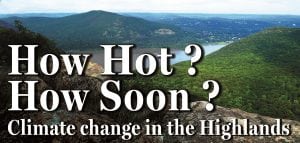 “The sea is a cruel master, and she hath taught me prudence.” ~Blackbeard, Buccaneer (1922)
“The sea is a cruel master, and she hath taught me prudence.” ~Blackbeard, Buccaneer (1922)
By Chip Rowe
Everyone loves being near the water, as long as it’s not over your head. The coasts are also the most densely developed areas of the U.S., and the most vulnerable to rapid climate change due to global warming.
That warming is caused by the increasing amount of carbon dioxide (CO2) in the atmosphere, which traps heat and has been melting ice at the poles faster than scientists anticipated, adding to the volume of the oceans. The heat is also increasing the temperature of the water, causing it to expand.

Together these factors have pushed sea levels up about 8 inches since 1900. That doesn’t sound like much, but it’s 8 inches closer to overrunning the banks, and ocean water doesn’t recede like storm surge. More important, in the past 20 years, the sea has risen roughly twice as fast as it did in the previous 100.
“We’re pretty much locked in at 2 to 3 feet of sea-level rise in this century,” says Radley Horton, a climate scientist at Columbia University who lives in Garrison. “That’s the best-case scenario. The further we push the system, the bigger potential for surprises, such as 6 to 8 feet.”

The rise will have profound effects on New York City. The Highlands, which are also located on the ocean (the lower part of the Hudson is an arm of the Atlantic, with tides and seawater) will likely also see dramatic changes, including more frequent flooding from storm surge and the eventual submersion of the Beacon, Cold Spring and Garrison waterfronts and Metro-North tracks.
In this, the second part of our series on climate change in the Highlands, we will look at:
- How the MTA plans to protect our access to New York City
- The extremes that the shoreline may have to endure
- Whether the dirt roads of Philipstown will survive
- How a Cold Spring architect is designing homes to withstand climate change
- A Beacon park that floods, designed for the 21st century
- The extreme storms that may soon pass for normal
- How we will deliver runoff to the river without also sending our sewage
The Series
Part 1: Runaway Train (May 4)
Part 3: Farm = Food (May 25)
Part 4: Into the Wild (June 1)
Part 5: What Now? (June 8)


A study by the Union of Concerned Scientists released on June 18 concluded that accelerating sea level rise due to climate change will put as many as 311,000 coastal homes at risk of chronic flooding from high tides within the next 30 years if nothing is done to slow global warming.
In New York, most of the endangered homes are on Long Island. But the union projects that by 2060, eight properties in Garrison, valued at a total of $3.6 million and contributing $83,500 in property taxes, will be endangered, and 12 in Cold Spring, valued at $5 million and contributing $112,700 in taxes.
By 2080, 10 homes in Garrison and 15 homes in Cold Spring will be endangered, together contributing about $250,000 in property taxes. The report did not project any losses in Beacon.